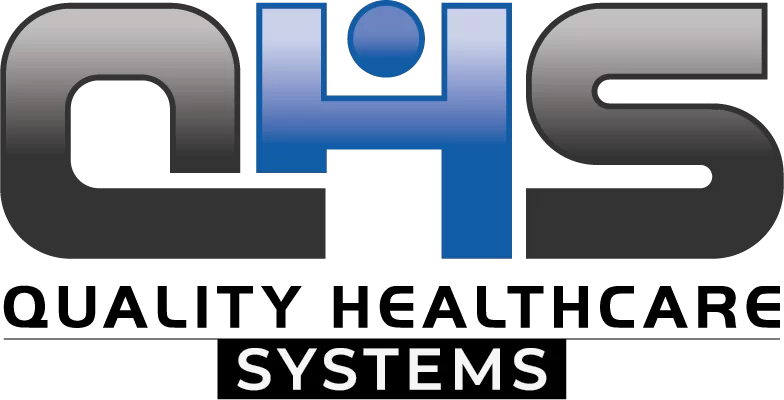Patient retention is one of the most critical factors in the success of a solo medical practice. It measures how well a practice maintains its existing patient base over time. While many practices focus on acquiring new patients, retaining current ones is often more cost-effective and beneficial for long-term growth. This blog explores what patient retention is, why it matters for your solo practice, and strategies to improve it.
What is Patient Retention in Healthcare?
Patient retention refers to a healthcare provider’s ability to keep existing patients coming back for follow-up visits, treatments, or routine check-ups. It is often measured by the average patient retention rate, which reflects the percentage of patients who continue their care with the same provider over a specific period.
A strong retention rate indicates trust and loyalty, key elements in building a successful solo practice with fewer patient no-shows. Retaining patients ensures continuity of care, leading to better health outcomes and patient satisfaction.
What is Patient Retention Rate Formula?
The Patient Retention Rate (PRR) is a metric used by healthcare providers to measure how effectively they retain patients over a specific period of time. It helps assess patient loyalty and the quality of care and service delivery.
Retention Rate Formula:
(Number of patients at the end of a period – New patients during the period) ÷ Number of patients at the start of the period × 100.
Patient Retention Rate Formula
Patient Retention Rate (%)=(E−NS)×100\text{Patient Retention Rate (\%)} = \left( \frac{\text{E} – \text{N}}{\text{S}} \right) \times 100Patient Retention Rate (%)=(SE−N)×100
Where:
-
S = Number of patients at the start of the period
-
E = Number of patients at the end of the period
-
N = Number of new patients acquired during the period
Example:
Let’s say:
-
You started with 1,000 patients
-
Ended with 1,100 patients
-
Gained 300 new patients during the period
PRR=(1100−3001000)×100=(8001000)×100=80%\text{PRR} = \left( \frac{1100 – 300}{1000} \right) \times 100 = \left( \frac{800}{1000} \right) \times 100 = 80\%PRR=(10001100−300)×100=(1000800)×100=80%
So, 80% of your patients stayed with your practice during that time.
Why is Patient Retention Important for Solo Practices?
Retaining patients is especially vital for solo practitioners, as it offers several benefits:
- Lower Costs: Acquiring new patients can cost up to five times more than retaining existing ones.
- Steady Revenue: Loyal patients provide a reliable source of income through regular visits and treatments.
- Better Patient Outcomes: Consistent follow-ups with retained patients improve care quality and outcomes.
- Increased Referrals: Satisfied patients are more likely to refer friends and family, further contributing to practice growth.
Solo practices can combine patient retention with billing services for small practice and ensure steady cash flow and optimized operations.
Patient Retention vs. Patient Acquisition: Finding the Right Balance
While acquiring new patients is essential, focusing exclusively on it can be costly and unsustainable. Retention, on the other hand, helps build lasting relationships that enhance trust and loyalty. The ideal approach balances both:
- Acquisition: Attracting new patients through marketing and community engagement.
- Retention: Strengthening bonds with existing patients through personalized care and consistent communication.
By addressing both patient acquisition and retention, solo practices can achieve sustainable growth while maintaining high-quality care.
Key Patient Retention Strategies for Solo Practices
Improving patient retention requires a proactive and patient-focused approach. Here are some proven strategies:
1. Provide Exceptional Patient Experiences
- Reduce wait times and ensure on-time appointments.
- Offer personalized care by remembering patient preferences and history.
- Show empathy and listen actively to patient concerns.
2. Leverage Technology for Better Engagement
- Use patient portals for scheduling, test results, and communication.
- Send automated reminders for appointments, follow-ups, and annual check-ups.
3. Communicate Effectively
- Keep patients informed about their care through newsletters, health tips, and updates.
- Use text or email notifications to remind patients of upcoming appointments.
4. Offer Loyalty Incentives
- Implement loyalty programs for regular visits or annual check-ups.
- Offer discounts for routine care packages to encourage continued engagement.
5. Gather and Act on Feedback
- Conduct patient satisfaction surveys to understand areas for improvement.
- Use feedback to refine processes and improve the overall patient experience.
Integrating these strategies can take you one step closer to a managed revenue cycle, simplifying processes and enhancing patient satisfaction.
Common Reasons for Patient Attrition and Strategies to Counteract Them
| Reason for Patient Attrition | Counteracting Strategy |
| Long wait times | Implement scheduling software to optimize appointments and reduce delays. |
| Poor communication | Use automated systems to send timely appointment reminders and follow-ups. |
| Limited availability for appointments | Extend office hours or offer telehealth options for flexibility. |
| Lack of personalized care | Train staff to remember patient preferences and engage in empathetic communication. |
| Inconsistent follow-ups | Create a system for regular check-ins, reminders, and health updates. |
| Negative patient experiences or feedback | Use surveys to gather insights and address concerns promptly. |
How Does Emotional Connection Influence Patient Loyalty?
Patient retention isn’t purely operational—it’s deeply emotional. Patients who feel genuinely cared for are more likely to return. Solo practices, in particular, thrive on strong provider-patient relationships where empathy, understanding, and emotional safety are present.
Empathy during consultations, remembering personal details, or simply asking how a patient is doing outside of their diagnosis builds trust. This emotional resonance often outweighs convenience or pricing when it comes to choosing healthcare providers.
Can Mental Health Comfort Improve Retention?
Yes. Patients who feel mentally safe and supported are far more likely to stick with a provider. In solo practices, creating a calm, non-judgmental environment and being mindful of language, tone, and privacy can drastically improve emotional retention.
Also Read:
| ICD code for ankle fracture |
| ICD code for Hip Fracture |
| ICD-10 Code For L2 Compression Fracture |
| ICD-10 Code For Right Wrist Pain |
How Can Well-Trained Staff Influence Patient Loyalty?
- Your front-desk and support staff represent your practice as much as you do. Patients are more likely to return when greeted warmly, treated respectfully, and guided clearly through appointments or billing.
Staff retention training tips:
-
Train staff on soft skills and conflict resolution.
-
Encourage consistent communication tone—friendly, calm, and clear.
-
Run mock scenarios to handle late arrivals or billing confusion empathetically.
Should You Include Feedback Training?
Absolutely. Staff should be trained to ask for feedback and respond to it graciously. A staff member who says, “Thank you for the input, we’ll share that with the doctor” builds confidence in the system and shows patients that their voices matter.
Do Online Reviews Affect Whether Patients Come Back?
Yes. Online reviews don’t just attract new patients—they validate a patient’s decision to return. A mix of testimonials and timely replies to reviews reinforces the patient’s belief that they are in good hands.
How Can Solo Practices Use Digital Presence to Improve Loyalty?
-
Keep Google Business and Healthgrades profiles updated.
-
Share patient stories (with permission) or health tips on social media.
-
Offer online scheduling, FAQs, and contact forms on your website.
- Patients expect digital convenience today—and meeting that expectation supports retention.
What Tools Can Help Solo Practices Measure Retention?
- While the retention formula is helpful, software can automate and deepen insights. Tools like:
-
EHRs (Electronic Health Records): Track appointment history, treatment plans, and follow-ups.
-
CRMs for healthcare: Manage communication, flag inactive patients, and log engagement notes.
-
Patient Engagement Platforms (e.g., Solutionreach, Luma Health): Send reminders, surveys, and newsletters.
-
Practice Management Software: Integrates billing and scheduling, helping you identify patient patterns.
Should You Automate Retention Reports?
Yes. Set monthly or quarterly goals and generate automatic reports. Look for red flags like frequent no-shows or drop-offs after initial consultations.
How to Communicate with Patients While Staying HIPAA-Compliant
What Are HIPAA-Safe Ways to Send Appointment Reminders?
HIPAA compliance isn’t just about data storage—it applies to every patient interaction. To stay compliant while sending appointment-related messages:
Use encrypted patient portals or HIPAA-compliant messaging tools.
Ensure email and text reminders contain no sensitive data unless the patient has opted in.
How Can You Ethically Follow Up on Missed Appointments?
Avoid pushy language. Use phrasing like:
“We noticed you haven’t visited in a while and wanted to check in. Let us know how you’re doing or if we can assist you.”
This approach respects their autonomy while showing concern.
What Are the Core Patient Retention Metrics to Track Besides PRR?
While the Patient Retention Rate (PRR) is a critical indicator, solo practices should also monitor Lifetime Value (LTV), churn rate, and visit frequency. LTV measures the total revenue a patient brings during their relationship with your practice, helping identify high-value patients. Churn rate, on the other hand, reflects how many patients stop coming over a set time—an early signal of poor engagement or service issues. Visit frequency tracks how often patients return, offering insight into the effectiveness of follow-ups and ongoing care plans.
To measure these KPIs efficiently, use tools like Kareo, SimplePractice, or AthenaHealth, which automate analytics reporting and patient insights.
How Does Patient Experience Influence Retention in a Solo Practice?
In solo practices, patient experience is often the single biggest differentiator. Everything from the waiting room atmosphere to the physician’s tone can shape whether patients come back. A calm, clean, and organized environment reduces anxiety, while short wait times signal respect for patients’ schedules.
Most importantly, physician empathy creates emotional safety. Taking a few minutes to listen actively, remember past concerns, and offer reassurance strengthens trust. In smaller settings where personal attention is expected, this kind of emotional connection significantly boosts loyalty and positive word-of-mouth referrals.
What Digital Tools Can Solo Practices Use to Improve Retention?
Digital tools are essential for optimizing patient communication and engagement. Appointment scheduling tools like Calendly Health or Mend simplify the booking process and reduce friction for returning patients. Patient portals and EMRs (e.g., AdvancedMD, eClinicalWorks) enable easy access to follow-up notes, test results, and future care plans, reinforcing continuity.
Telehealth platforms like Doxy.me or Zoom for Healthcare allow patients to attend check-ins without traveling, while SMS and email reminders through systems like Solutionreach or Luma Health help reduce no-shows and reinforce commitment.
How Do Patient Demographics Affect Retention Strategies?
Patient retention isn’t one-size-fits-all. Understanding your patient demographics—age, income level, education, language, and health literacy—is key to customizing effective retention strategies. For example, older adults may prefer printed reminders and in-person visits, while younger patients often appreciate mobile apps and self-service scheduling.
Language barriers can also impact retention. Offering multilingual support or translated instructions makes care feel more accessible and personal. For low-income patients, flexible payment plans or community health resource referrals can build trust and long-term loyalty.
How Do Patient Demographics Affect Retention Strategies?
Patient retention isn’t one-size-fits-all. Understanding your patient demographics—age, income level, education, language, and health literacy—is key to customizing effective retention strategies. For example, older adults may prefer printed reminders and in-person visits, while younger patients often appreciate mobile apps and self-service scheduling.
Language barriers can also impact retention. Offering multilingual support or translated instructions makes care feel more accessible and personal. For low-income patients, flexible payment plans or community health resource referrals can build trust and long-term loyalty.
What Role Do Online Reviews and Reputation Management Play in Retention?
Online reviews play a double role in attracting new patients and validating existing ones. Patients who are unsure about returning often check platforms like Google Reviews, Zocdoc, and Healthgrades to see what others say. Encourage satisfied patients to share their positive experiences by sending a follow-up message with a direct review link.
When a negative review appears, respond promptly and professionally without revealing protected health information. A response like, “We’re sorry to hear about your experience and would love to resolve it privately,” can turn a critic into a loyal patient—and shows others that you value feedback.
What Are Ethical Considerations in Patient Retention Strategies?
Ethics and compliance are non-negotiable in healthcare retention strategies. HIPAA compliance must be maintained across all patient communication—whether it’s a reminder text or a follow-up email. Use HIPAA-compliant messaging systems and avoid sending personal health details through unsecured platforms.
Additionally, when using patient data for targeting (e.g., sending newsletters or follow-up campaigns), ensure patients have opted in. Ethically, retention strategies should prioritize patient benefit over revenue generation, avoiding any tactics that pressure or manipulate individuals into continued care.
How Do You Balance Retention With Growth in a Solo Practice?
Retention and growth should work in tandem, not in competition. In the early stages of a solo practice, focusing on loyalty and repeat visits ensures a stable foundation. As systems solidify, outreach campaigns can target new patients via referrals, reviews, and local SEO.
But capacity planning is essential—don’t accept more new patients than your schedule or systems can support. Overbooking leads to rushed visits, longer wait times, and poor reviews. A balanced approach involves gradually scaling up while maintaining high-quality service for existing patients.
FAQs
What is a good patient retention rate for solo practices?
A retention rate of 75–90% is considered strong for solo practices, depending on the specialty and patient demographics.
How can I increase patient retention quickly?
Focus on effective communication, timely appointment reminders, and personalized care to quickly improve patient loyalty.
Why do patients leave a practice?
Common reasons include long wait times, poor communication, lack of follow-up, and limited availability of services. Addressing these issues can significantly improve retention.
Conclusion
Patient retention is a vital component of sustainable growth for solo practices. By prioritizing personalized care, leveraging technology, and consistently communicating with patients, you can build loyalty and trust that benefit both your patients and your practice.






